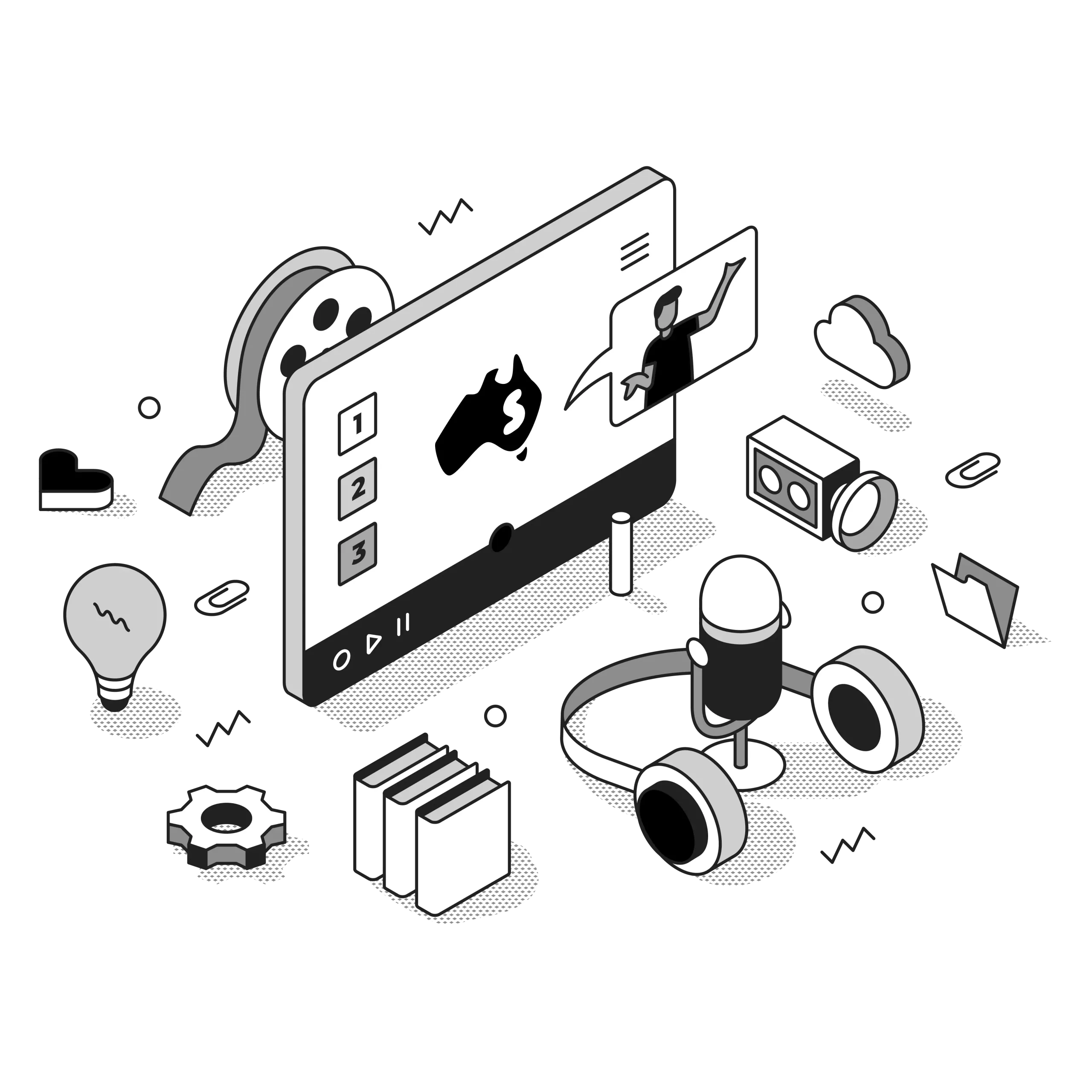Train Your Aussie Team on HubSpot CRM the Right Way

Picture this: You’ve just invested in HubSpot CRM for your company. The software looks promising, your team seems eager, but three months later, you’re watching colleagues still fumble through basic tasks while customer data sits scattered across spreadsheets. Sound familiar?
You’re not alone, mate. Across Australia, countless businesses are discovering that buying powerful CRM software is only half the battle. The real challenge lies in getting your team to actually use it properly. That’s where smart HubSpot CRM training comes into play.
Why Most HubSpot CRM Training Fails (And How to Avoid These Pitfalls)
Let’s be honest about something. Most companies approach CRM training like they’re teaching someone to drive by handing them a manual and saying “good luck.”
We’ve seen it happen time and again across Australian businesses. Management gets excited about HubSpot’s features, rushes through a basic walkthrough, then wonders why adoption rates are lower than a cricket score on a rainy day.
The truth is, effective HubSpot CRM training requires more than just showing people where to click. It demands understanding how your team actually works, what motivates them, and how to transform their daily routines without overwhelming them.
Also Read: Australia’s Go-To HubSpot Elite Partners Revealed
The Australian Business Challenge: Why Your Team Needs Proper HubSpot Training
Here’s what we’re seeing across the Australian market. Mid-sized companies are growing faster than ever, but their systems aren’t keeping pace. You’ve got sales teams juggling multiple tools, marketing departments working in silos, and customer service reps who can’t access the information they need when they need it.
HubSpot CRM promises to solve these problems, but only if your team knows how to use it effectively. Poor training leads to:
- Data inconsistency that makes reporting useless
- Low user adoption that wastes your investment
- Frustrated employees who revert to old methods
- Missed opportunities because information falls through cracks
The cost of inadequate training isn’t just financial. It’s the deals that slip away, the customers who feel neglected, and the team members who lose confidence in new technology.
Building Your HubSpot CRM Training Foundation
Before diving into features and functions, you need to establish the right foundation. Think of it like building a house. You wouldn’t start with the roof, would you?
Understanding Your Team’s Starting Point
Every team member brings different experience levels and comfort zones with technology. Some might be digital natives who pick up new software like they’re scrolling through social media. Others might need more hand-holding.
Start by assessing where each person stands. Create a simple skills inventory that covers:
- Previous CRM experience
- Comfort level with new technology
- Current daily workflows
- Specific job responsibilities that will use HubSpot
This isn’t about judging anyone’s abilities. It’s about creating training paths that meet people where they are.
Setting Clear Training Objectives
Here’s where many training programs go wrong. They try to teach everything at once instead of focusing on what actually matters for each role.
Your sales team doesn’t need to know every marketing automation feature on day one. Your customer service reps don’t need detailed reporting functions initially. Focus on core competencies that will immediately improve their daily work.
The Smartmates Approach to HubSpot CRM Training
At Smartmates, we’ve refined our training methodology through years of working with Australian businesses. Our approach focuses on practical application rather than theoretical knowledge.
Phase 1: Foundation Building
We begin every training program with what we call “HubSpot fundamentals.” This covers:
Navigation and Interface Familiarisation
- Understanding the main navigation structure
- Customising the dashboard for individual needs
- Setting up personal preferences and notifications
Contact Management Basics
- Adding and editing contact information
- Understanding contact properties and their importance
- Using tags and lists effectively
Deal Pipeline Fundamentals
- Creating and moving deals through stages
- Understanding deal probability and forecasting
- Setting up tasks and follow-up reminders
Phase 2: Role-Specific Deep Dives
Once everyone’s comfortable with the basics, we move into specialised training based on specific roles and responsibilities.
Sales Team Focus Areas:
| Feature | Application | Business Impact |
| Email Templates | Standardised outreach | Consistent messaging, time savings |
| Sequence Automation | Lead nurturing | Higher conversion rates |
| Activity Tracking | Performance monitoring | Data-driven improvements |
| Pipeline Reporting | Sales forecasting | Better resource planning |
Marketing Team Priorities:
The marketing team gets trained on lead scoring, campaign tracking, and integration with other marketing tools. We show them how to create landing pages that feed directly into HubSpot, set up automated workflows that nurture leads, and generate reports that prove marketing ROI.
Customer Service Applications:
Customer service reps learn ticket management, knowledge base integration, and how to access complete customer histories. They discover how to escalate issues properly and track resolution times that impact customer satisfaction scores.
Phase 3: Advanced Features and Optimisation
After teams master their core functions, we introduce advanced features that can transform their workflow efficiency.
This includes custom properties, advanced reporting, integration setup, and workflow automation that saves hours of manual work each week.
Hands-On Training Methods That Actually Work
Traditional training methods often fail because they don’t mirror real-world usage. Sitting in a conference room watching someone click through screens doesn’t prepare people for the daily chaos of actually using the system.
The Simulation Approach
We create training scenarios based on your actual business situations. Instead of generic examples, trainees work with data and scenarios they’ll encounter in their real jobs.
For instance, rather than teaching deal creation with fake company names, we use your actual prospects and customers (with appropriate permissions, of course). This makes the training immediately relevant and memorable.
Buddy System Implementation
Pairing experienced users with newcomers creates ongoing support that extends beyond formal training sessions. This peer-to-peer learning often addresses questions that don’t come up in structured training.
The buddy system also helps identify common stumbling blocks early, allowing us to adjust training materials before problems become widespread.
Common HubSpot Training Mistakes to Avoid
Through our experience training hundreds of Australian teams, we’ve identified patterns in what doesn’t work.
Information Overload
The biggest mistake is trying to teach everything at once. HubSpot has hundreds of features, but most users only need a fraction of them initially. Start with essential functions and gradually introduce more complex capabilities.
Neglecting Ongoing Support
Training isn’t a one-and-done event. People forget details, new features get released, and business needs evolve. Successful HubSpot implementation requires ongoing support and refresher training.
Ignoring Individual Learning Styles
Some people learn best through visual demonstrations. Others need hands-on practice. Still others prefer written documentation they can reference later. Effective training incorporates multiple learning styles rather than assuming one approach fits everyone.
Skipping Integration Training
HubSpot rarely operates in isolation. Most businesses need integration with accounting software, email platforms, or other business tools. Training should cover these connections, not just standalone HubSpot functionality.
Measuring Training Success: Key Performance Indicators
How do you know if your HubSpot CRM training is actually working? You need measurable indicators that go beyond “people seem happy with the training.”
User Adoption Metrics
Track how many team members are actually logging into HubSpot regularly. More importantly, monitor what they’re doing once they’re there. Are they just checking existing information, or are they actively adding new data and using advanced features?
Data Quality Improvements
Good training should result in better data entry practices. Monitor contact completeness, deal stage accuracy, and consistency in how information is recorded across team members.
Productivity Measurements
Measure how long common tasks take before and after training. Creating quotes, updating customer information, and generating reports should become faster and more efficient.
Revenue Impact
Ultimately, better CRM usage should translate into business results. Track metrics like deal conversion rates, sales cycle length, and customer retention rates to measure the business impact of your training investment.
Advanced Training Strategies for Maximum ROI
Once your team masters the basics, advanced strategies can multiply your HubSpot investment returns.
Workflow Automation Training
Teaching teams to create automated workflows eliminates repetitive tasks and ensures consistent follow-up. We’ve seen businesses save 10-15 hours per week per person through effective automation.
Custom Reporting Development
Standard reports are useful, but custom reports tailored to your specific business needs provide insights that drive strategic decisions. Training key team members to create these reports eliminates dependence on external consultants for ongoing reporting needs.
Integration Optimisation
HubSpot’s power multiplies when integrated properly with other business systems. Advanced training covers API connections, data synchronisation, and troubleshooting integration issues.
Creating a Sustainable Training Culture
The most successful HubSpot implementations don’t just train people once. They create cultures of continuous learning and improvement.
Internal Champions Development
Identify team members who show aptitude and enthusiasm for HubSpot. Provide them with advanced training so they can become internal resources for ongoing questions and support.
Regular Training Sessions
Schedule monthly “HubSpot tips” sessions where team members share discoveries, discuss challenges, and learn about new features. This keeps skills sharp and encourages continued exploration.
Documentation and Resources
Maintain updated internal documentation that reflects your specific HubSpot setup and business processes. Generic HubSpot documentation is helpful, but customised guides that reflect your actual workflows are invaluable.
Choosing the Right Training Partner
Not all HubSpot training is created equal. When selecting a training provider, consider these factors:
Local Australian Experience
Working with providers who understand Australian business culture, compliance requirements, and market conditions makes training more relevant and effective.
Certified Expertise
Look for HubSpot certified trainers who stay current with platform updates and best practices. Certification ensures trainers understand not just how features work, but when and why to use them.
Customised Approach
Avoid one-size-fits-all training programs. Your business has unique needs, processes, and challenges that generic training can’t address effectively.
Ongoing Support
Training should include post-implementation support to address questions and challenges that arise during real-world usage.
Transform Your Business with Expert HubSpot CRM Training
The difference between businesses that succeed with HubSpot and those that struggle isn’t the software itself. It’s how well their teams are trained to use it.
At Smartmates, we’ve helped hundreds of Australian businesses unlock HubSpot’s full potential through comprehensive, practical training programs. Our certified experts understand both HubSpot’s capabilities and the unique challenges facing Australian businesses.
We don’t just teach people how to use HubSpot. We help them transform their daily workflows, improve customer relationships, and drive measurable business growth.
Ready to transform your team’s HubSpot skills?
Don’t let poor training waste your CRM investment. Contact Smartmates today to discuss how our customised HubSpot CRM training can help your Australian team achieve better results faster.
Our team of certified HubSpot experts will assess your current situation, design training that fits your specific needs, and provide ongoing support to ensure long-term success.
Visit smartmates.com.au or call us today to schedule your consultation. Your team deserves training that actually works, and your business deserves the results that proper HubSpot implementation can deliver.
Because when your team knows how to use HubSpot properly, everything changes. Customer relationships improve. Sales processes become more efficient. Marketing campaigns deliver better results. And your business grows in ways you might not have thought possible.
The question isn’t whether you can afford comprehensive HubSpot training. It’s whether you can afford not to invest in it.
Transform your team. Transform your results. Transform your business.
Contact Smartmates today and discover what proper HubSpot CRM training can do for your Australian business.
Request a Callback from Smartmates

Sarah
I’ll listen to your HubSpot needs to understand your business challenges and goals, ensuring a tailored approach.
I’ll bring our engineer onto our first consultation to explore solutions and clarify your requirements.
We’ll deliver your free project plan quotation, detailing the steps, timeline, and costs—up to this point, it’s completely free!
“My mission is to solve your key problems, build your trust in our capabilities and deliver exceptional value for money.”